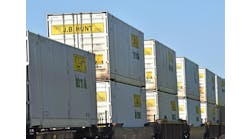The year 2012 saw a 3.7-percent increase in the number of people killed in crashes involving large trucks, according to the U.S. Dept. of Transportation’s National Highway Traffic Safety Administration (NHTSA). Looking across all fatality categories, the number of nonoccupant fatalities is the only category of fatalities that declined from 2011 to 2012—a decline of 11 percent. All other categories of fatalities in large-truck crashes increased.
In 2012 there was an 8.9-percent increase in large-truck occupant fatalities and an 8.7-percent increase in large-truck occupants injured from 2011.
Large-truck occupants in single-vehicle crashes increased by the smallest percentage (3.9%), while those in multivehicle crashes increased by the largest (18%). The NHTSA notes that the number of fatal crashes involving large trucks is relatively small, so such variability in the number of fatalities is not unexpected.
American Trucking Associations leaders issued a statement saying these numbers paint an incomplete and misleading picture of the nation’s trucking industry.
“When the public hears the term ‘large truck,’ they naturally think of the millions of large tractor-trailers that deliver their most essential goods,” said ATA President and CEO Bill Graves. “However, (these data) lump those tractor-trailers in with millions of smaller, non-freight-hauling vehicles whose crash rates are higher than in the trucking industry. The federal government should not be so casual with its terminology and should provide further information and clarity to the public.”
The American Transportation Research Institute found earlier this year “noticeable differences in safety trends between different truck sizes, with medium-duty generally performing worse than heavy-duty trucks, ATA noted. In addition, the results indicated disparities between interstate and intrastate motor carriers.
“ATA, along with the trucking industry, has a deep commitment to improving safety on our highways,” said ATA Chairman Phil Byrd, president of Bulldog Hiway Express. “That’s why ATA has pushed the federal government to limit truck speeds and require electronic logging devices for large trucks, as well as lobbying for improved enforcement of traffic rules around our large trucks so we can all arrive at our destination safely.”


